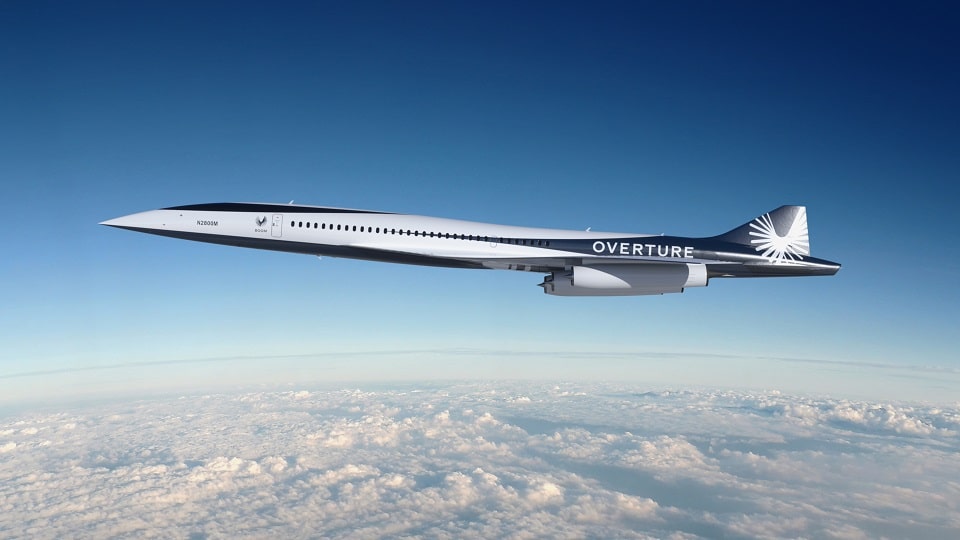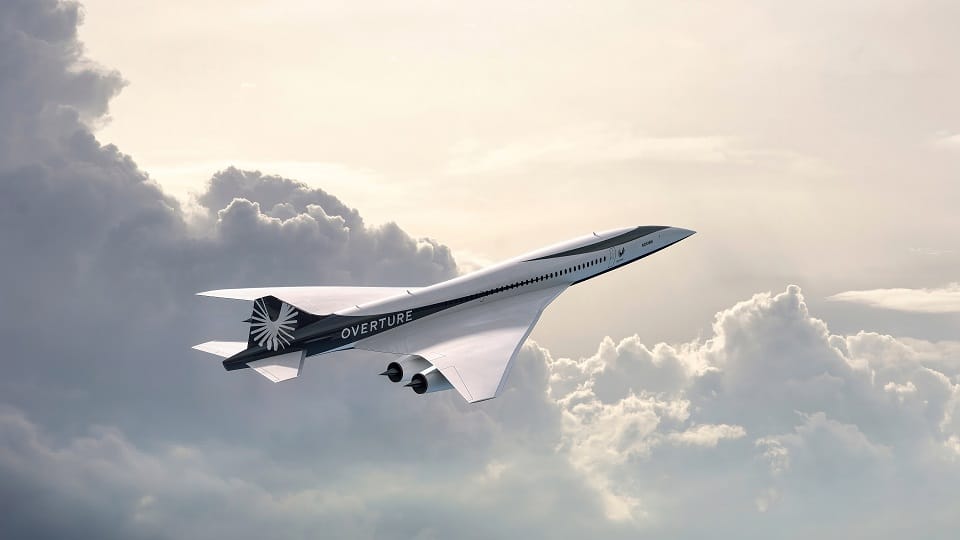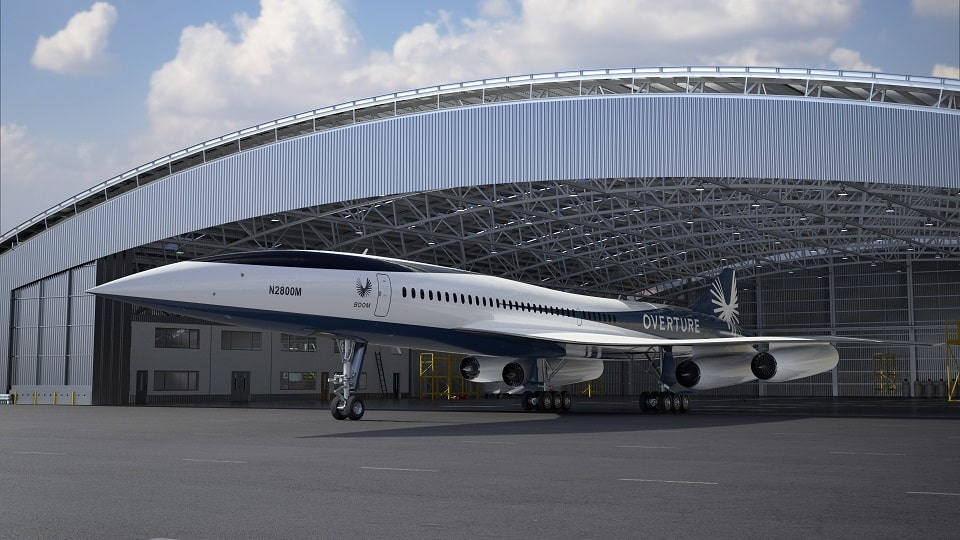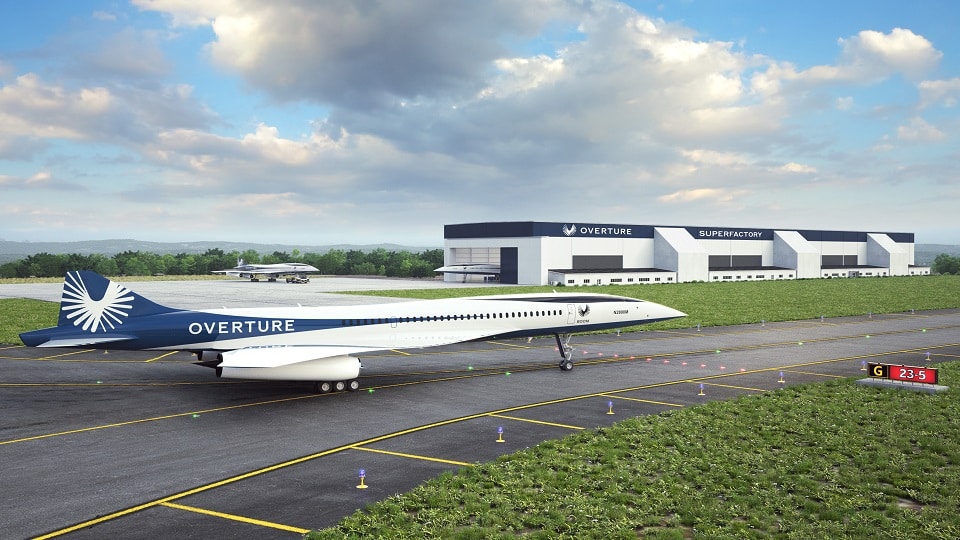Aerospace
Supersonic flight will soon become a reality. Prepare to soar above the speed of sound.
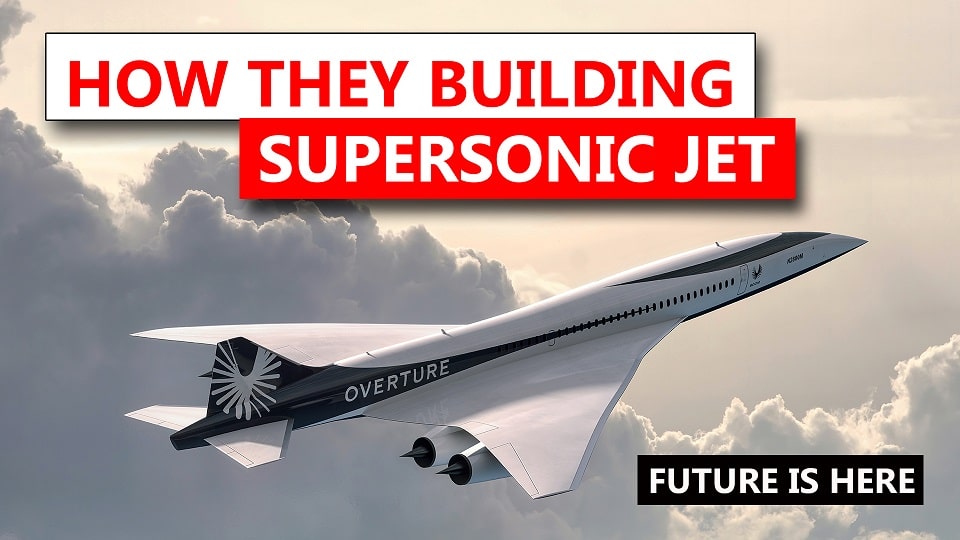
The Boom Overture is a US company that claims to be developing a super-fast commercial jet that can travel at Mach 1.7, or about 1,800 km/h, which is comparable to the speed of any fighter jet aircraft.
The program began at the beginning of 2016, and at the 2017 Paris Airshow, many airlines expressed interest in and commitment to purchasing the booming aircraft.
We discover more about this airplane in this article. How this airplane was created as well as some of its interesting features.
The supersonic jet can accommodate 65 to 88 passengers in an aircraft with a 7,870-kilometre range. This supersonic aircraft travels great distances in fast succession. There are 500 potential routes, the business believes, that could provide healthy profits for airlines. By 2029, the airplane will be ready.
The Concorde-like delta wing structure of the aircraft will be replaced by a composite version. It is anticipated that it will be propelled by four dry or non-afterburning engines, each of which can provide between 67 and 89 kilonewtons of thrust. Once the engine is built, the aircraft takeoff sound will be evaluated and adjusted. The aircraft must comply with airport regulations.
1. Boom Engine development
Initially, Rolls Royce was the first option for the engine’s development; however, it eventually withdrew from the project. Now, Boom Company has identified an engine partner to help it develop its aircraft engine.
For use in Overture, the Boom Symphony, a two-spool medium-bypass turbofan engine, is currently being developed. The engine is intended to launch with a thrust of 35,000 pounds (160 kN), maintain Overture supercruise at Mach 1.7, and only burn sustainable aviation fuel.
Together with the Kratos subsidiary Florida Turbine Technologies for engine design, the General Electric subsidiary GE Additive for additive manufacturing consultancy, and StandardAero for maintenance, the engine will be developed. Boom hopes to start producing the engine at the Overture facility in Greensboro, North Carolina, in 2024.
2. The latest GE Technology engine and Sustainable fuel.
The business is also integrating GE additive into the Symphony initiative, which is primarily focused on advancing the development of ultrafast and lightweight engines. The main engine designer is Florida Turbine Technologies, which has experience designing engines for aircraft powered by the F-22 and F-35 engines. Boom is driving the development of the engine by merging all of the concept creations.
The new propulsion system for Overture will produce no carbon emissions and adhere to Chapter 14 noise standards. Symphony is anticipated to give a 25% increase in time on the wing and much cheaper engine maintenance expenses as compared to derivative techniques, lowering overall aircraft operating costs for airline customers by 10%.
Gulfstream G700 and G800 earn EASA certification(Opens in a new browser tab)
This airplane engine was created using additive manufacturing to minimize weight, the number of parts, and assembly costs. It also features a single-stage fan for quiet operation and a passively cooled high-pressure turbine.
Although it lacks an afterburner and is equipped with twin-spool and medium bypass turbofan engines, the aircraft will run on 100% sustainable aviation fuel.
3. Crew Training Program
Supersonic aircraft flying is difficult. Flying such aircraft requires a lot of experience due to the fact that they may attain speeds of up to 1.7 mach in a short period of time. Another amazing experience is further balancing all the airplane and engine thrust.
The Overture supersonic flight training and education program has chosen FlightSafety International (FSI) as its exclusive partner. The world’s top commercial aircraft producers and operators turn to FSI as the go-to source for professional aviation training and flight simulators.
Airbus delivers its first aircraft produced in the USA.(Opens in a new browser tab)
Boom supersonic aircraft all it goes with the simulation performance before it hits the air as pilots and crews will go through all types of training. The FSI is will conduct the training program for the crews.
FSI will develop a training program and curriculum for Overture pilots, mechanics, and cabin crew, specifically tailored for supersonic flight and operations. The comprehensive training program will leverage the expertise of professional FAA and EASA-qualified instructors and include state-of-the-art flight simulators and training environments. To support Boom’s commercial airline customers who conduct their own internal training, FSI will provide full-flight simulators.
4. State of the Art infrastructure.
Building the aircraft must be a required sophisticated plant and obviously, the superstructure since Boom supersonic has done the deal with Advanced integration technology as the tooling and automation provider and integrator for the Overture final assembly line. spans the design, fabrication, and installation of custom tooling for the Overture Superfactory.
AIT will provide an end-to-end system for the Superfactory, creating transportation and positioning tools for
fuselage assembly, wing assembly, wing-to-fuselage joining, and final assembly. Major hardware provided by AIT will include automated drilling machinery, mobile transport equipment, and setups for positioning and joining setups. Boom is prioritizing
5. Boom Overture Total orders.
Many orders were received before the flight’s completion. The majority of airlines believe that if it is successful, it will lead to new developments in air travel.
It was confirmed in December 2017 that Japan Carriers has pre-ordered up to 20 jets out of the 76 that five airlines had committed to buying. The CEO of Boom, Blake Scholl, predicts that 2,000 supersonic aircraft will link 500 cities and offers a one-way fare of £2,000 from London to New York that is similar to the current subsonic business class.
United Airlines announced on June 3, 2021, that it has inked a contract to buy 15 Overture aircraft with an additional 35 options, with plans to begin passenger service by 2029. American Airlines announced a deal to buy 20 Overture planes on August 16, 2022, with an additional 40 options.
As of the right moment, it has received 35 aircraft orders from all across the world, and 171 aircraft commitment orders will be made once the flight begins accepting passengers. Boom Supersonic may anticipate roughly 206 aircraft in the near future, securing its position as a market leader for supersonic aircraft.

Aerospace
When Ratan Tata was denied entry to the airfield at the Aero India show, he waited

During our visit to Aero India 2019, we had the unexpected opportunity to see Ratan Tata at the event, which was a thrilling moment for us. However, there was a surprising hiccup when the security staff didn’t allow him to enter due to a lack of a security pass.
Despite this, he remained calm and patiently waited for about 20 minutes until a member of the Tata team brought him the required pass, after which he calmly proceeded inside. It was a humbling sight, showcasing his composed demeanor even in such situations.
Ratan Tata ji is not only a renowned industrialist but also a trained pilot, holding a pilot’s license. In 2007, he became the first Indian civilian to fly the F-16 Falcon during the Aero India show in Bangalore—a proud moment for the nation.
His passion for aviation extended beyond flying, as he played a key role in shaping India’s aerospace industry. Under his leadership, Tata ventured into manufacturing and maintaining aerospace components while upholding its legacy of quality. Notably, Tata’s collaboration with Airbus to develop and manufacture the C295 aircraft is a testament to its growing influence in the sector.
-

 Aviation2 months ago
Aviation2 months agoMicrosoft Flight Simulator Raises $3 Million to Bring Back the An-225 Mriya
-

 Airlines2 months ago
Airlines2 months agoQatar Citizens Can Travel to the United States Without a Visa
-

 Aviation2 months ago
Aviation2 months agoQatar Airways bans these new Electronic Devices on plane
-

 Airlines2 months ago
Airlines2 months agoJapan Airlines Rolls Out Free Domestic Flights to International Passengers
-

 Defence2 months ago
Defence2 months agoWhich Country Has the Largest Fleet of Fighter Aircraft?
-

 Airport2 months ago
Airport2 months agoWestern Sydney Airport Welcomes Its First Plane After 6 Years of construction
-

 Travel2 months ago
Travel2 months agoQatar Airways Launches Four Additional Flights from Amsterdam
-

 Aviation2 months ago
Aviation2 months agoDid you know ? Once Boeing 747 carried 1088 passenger in 1991


